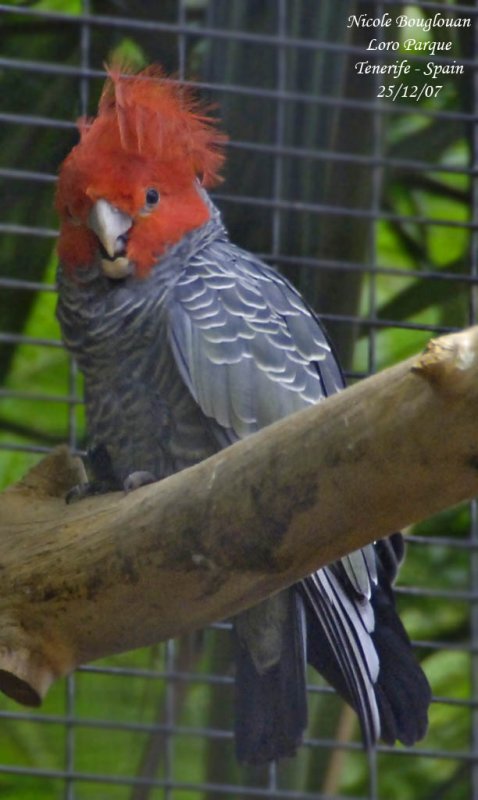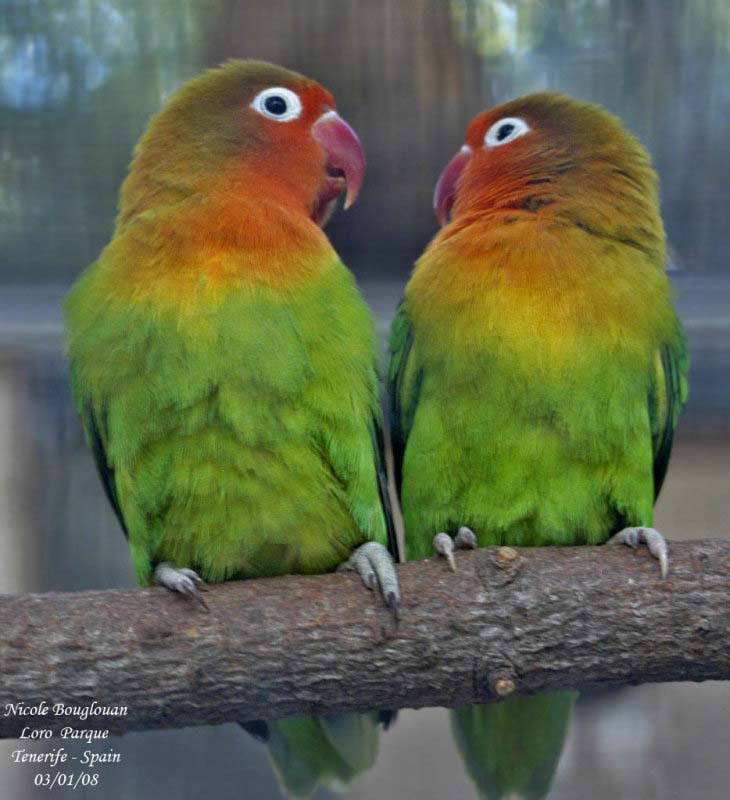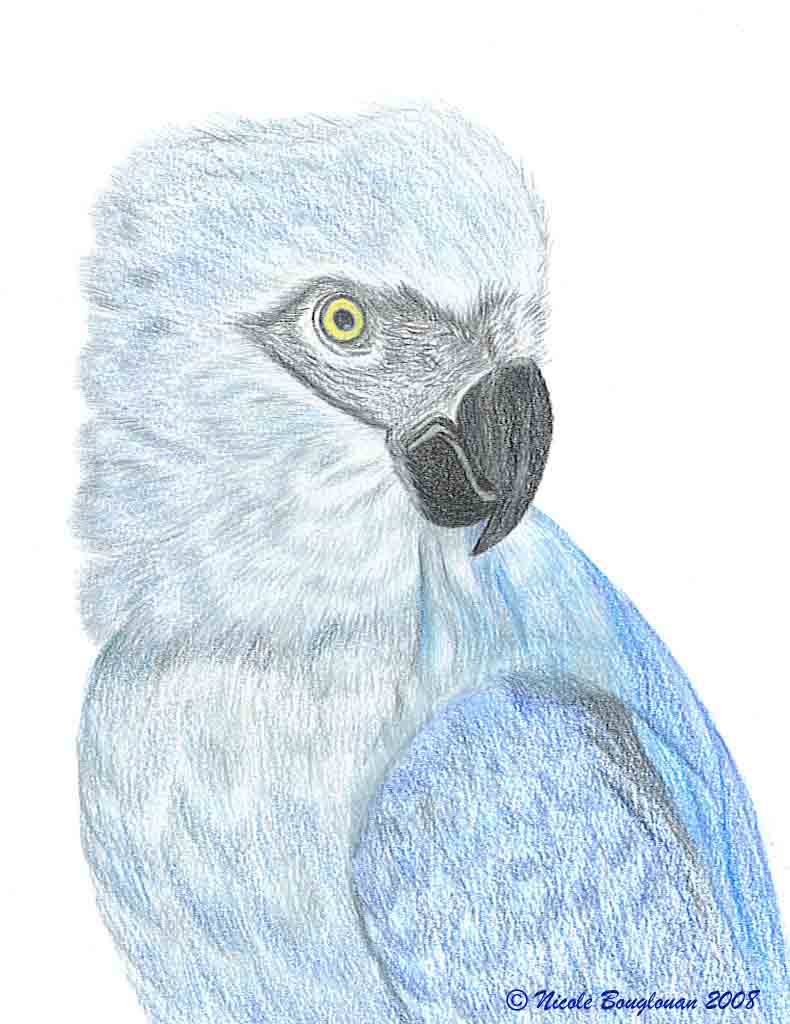
PARROTS AND Co
PSITTACIFORME ORDER
Psittacidae is a large family, including several races of parrots of different sizes and colours, but with almost similar behaviour throughout their wide range.
We find three main kinds of birds, the Cockatoos, the Parrots and the New Zealand Strigopidae species.
Text, illustration and photographs by Nicole Bouglouan
PSITTACIDAE PICTURES:: PHOTOGRAPHIC RAMBLE
Sources :
PARROTS OF THE WORLD – An Identification Guide – by Joseph M. Forshaw – Princeton University Press – ISBN 0691092516
HANDBOOK OF THE BIRDS OF THE WORLD vol 4 by Josep del Hoyo-Andrew Elliott-Jordi Sargatal - Lynx Edicions - ISBN: 8487334229
Related article: Parrots and clay… an old story !


The Cockatoos are large to medium-sized, with strong bill and conspicuous crest. They live in Australasia in variable habitats. They usually have less coloured plumage than Parrots, with mainly black or white plumage, embellished with bright coloured crest or tail. They are gregarious and often seen in large flocks while feeding, flying and roosting.
The Parrots are larger and stockier than Cockatoos, but there are very small races too. The strong bill is slightly slender and sometimes longer and they lack the conspicuous crest. The Parrots are found in Neotropical (South and Central America, Caribbean and Southern Florida), in Afrotropical (Sub-Saharan Africa and Madagascar), in Indomalaya (South and South-east Asia to southern parts of East Asia), and in Australasian ecozones (New Zealand, Australia, Papua New Guinea and Pacific Ocean islands). They live mainly in wooded areas.
Parrots usually have colourful plumage. Most of them show green plumage with bright coloured parts such as head, wings or tail, but many different patterns are found among them, which are the characteristic feature of these wonderful birds.
Cockatoos and Parrots feed mainly on fruits, nuts, seeds, buds and flowers from palm trees and several other plants’ species. They feed both in trees and on the ground. These birds often use one foot as a third hand, taking the item with the foot, and bringing it to the strong bill which allows to crack open very hard nuts.
Cockatoos and Parrots utters loud, harsh, raucous calls as contact calls within the flock, nest defence, alarm calls, and also softer sounds with young at nest.
All these birds are cavity-nesters, except the Monk Parakeet which builds a large colonial nest high in trees. Such nests, made with thorny twigs, are maintained all year round, and are used as roost outside the breeding season.
The other members of the Psittacidae family nest in natural cavities such as holes in trees, crevices in cliffs, or any suitable structure, but also in nest-boxes.
The eggs are always white. Usually, both sexes share the nesting duties. The period at nest is relatively long, lasting several weeks, and then, the young and their parents remain in family groups until the next breeding cycle.

